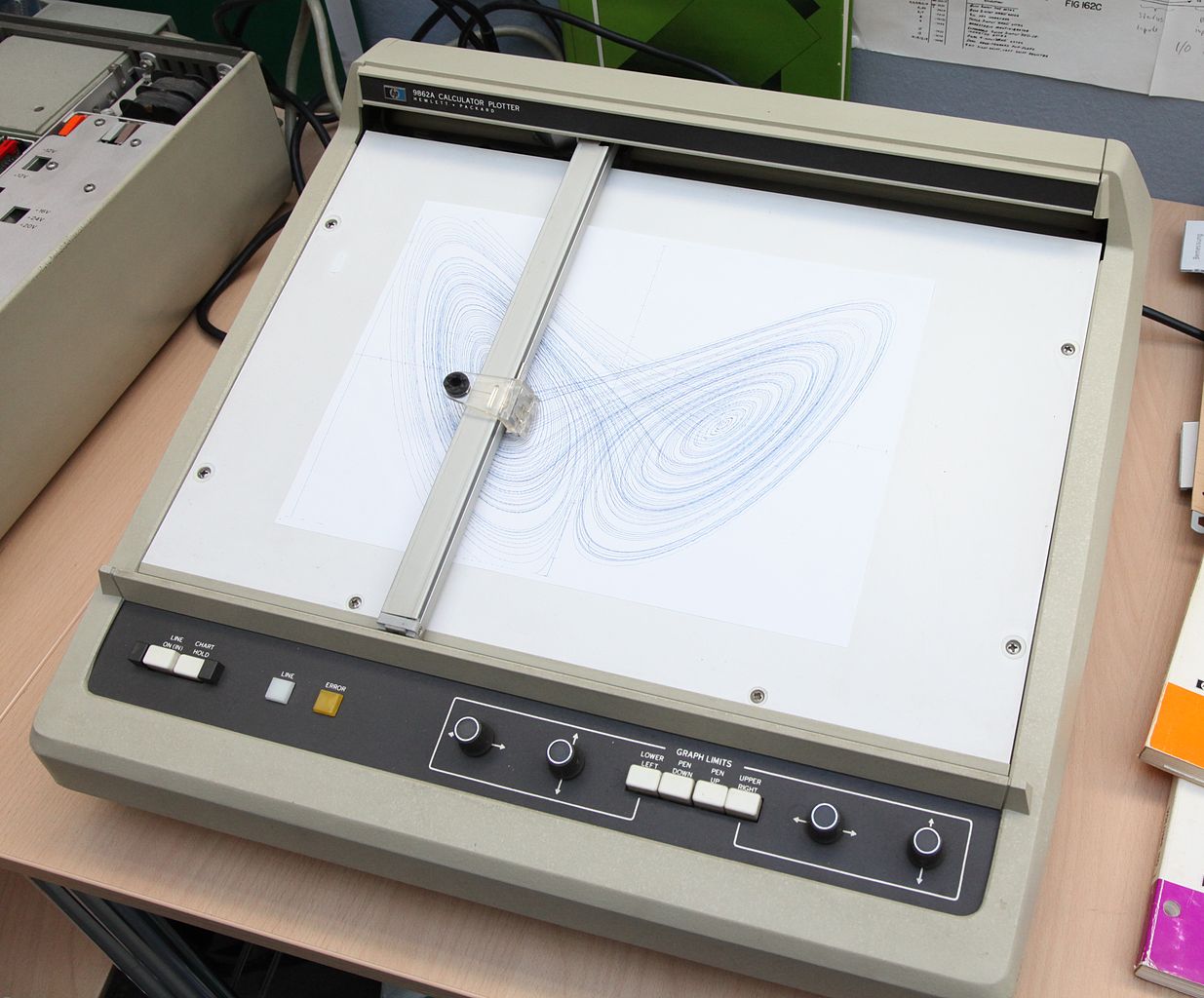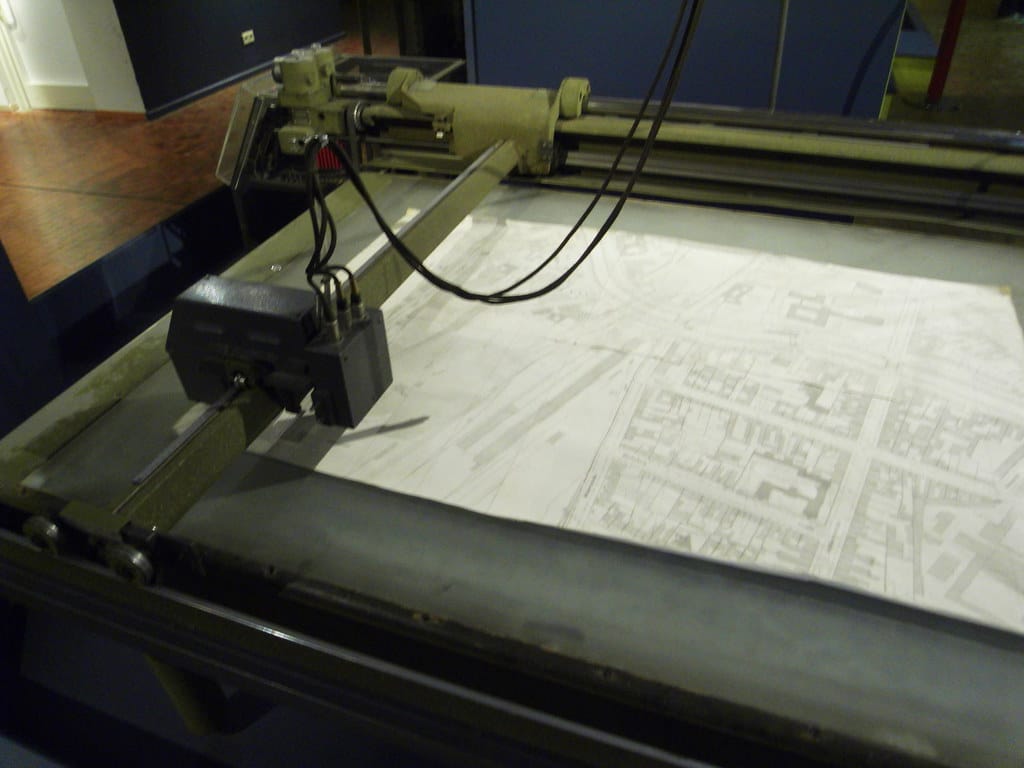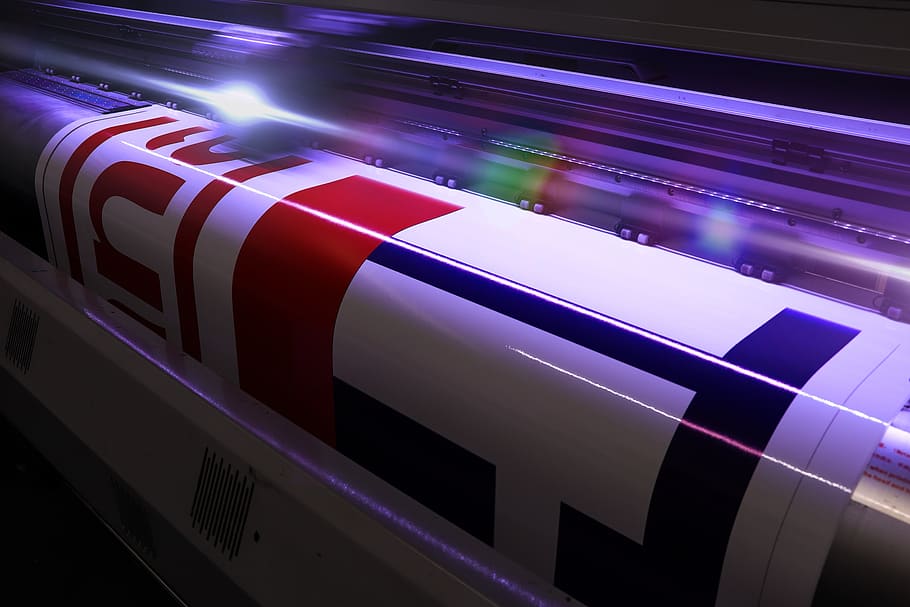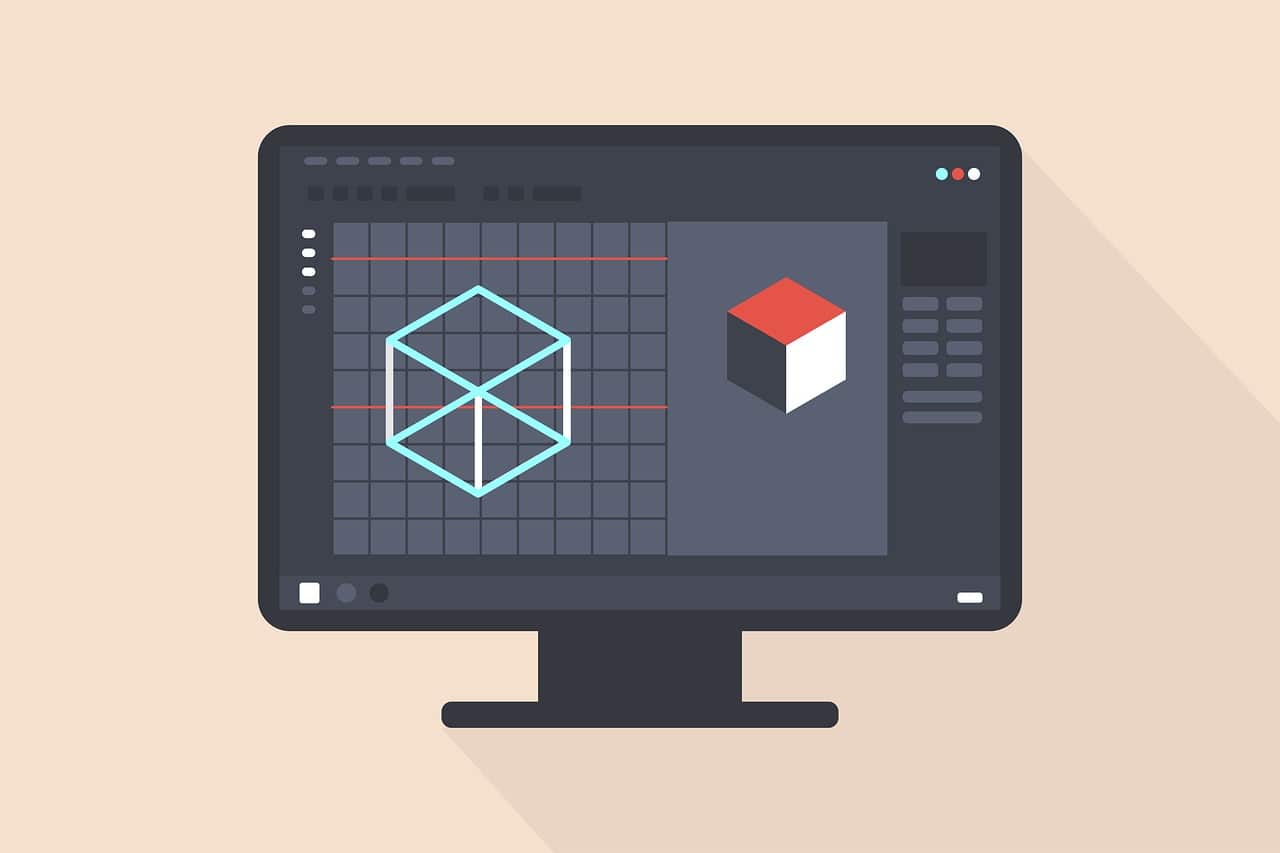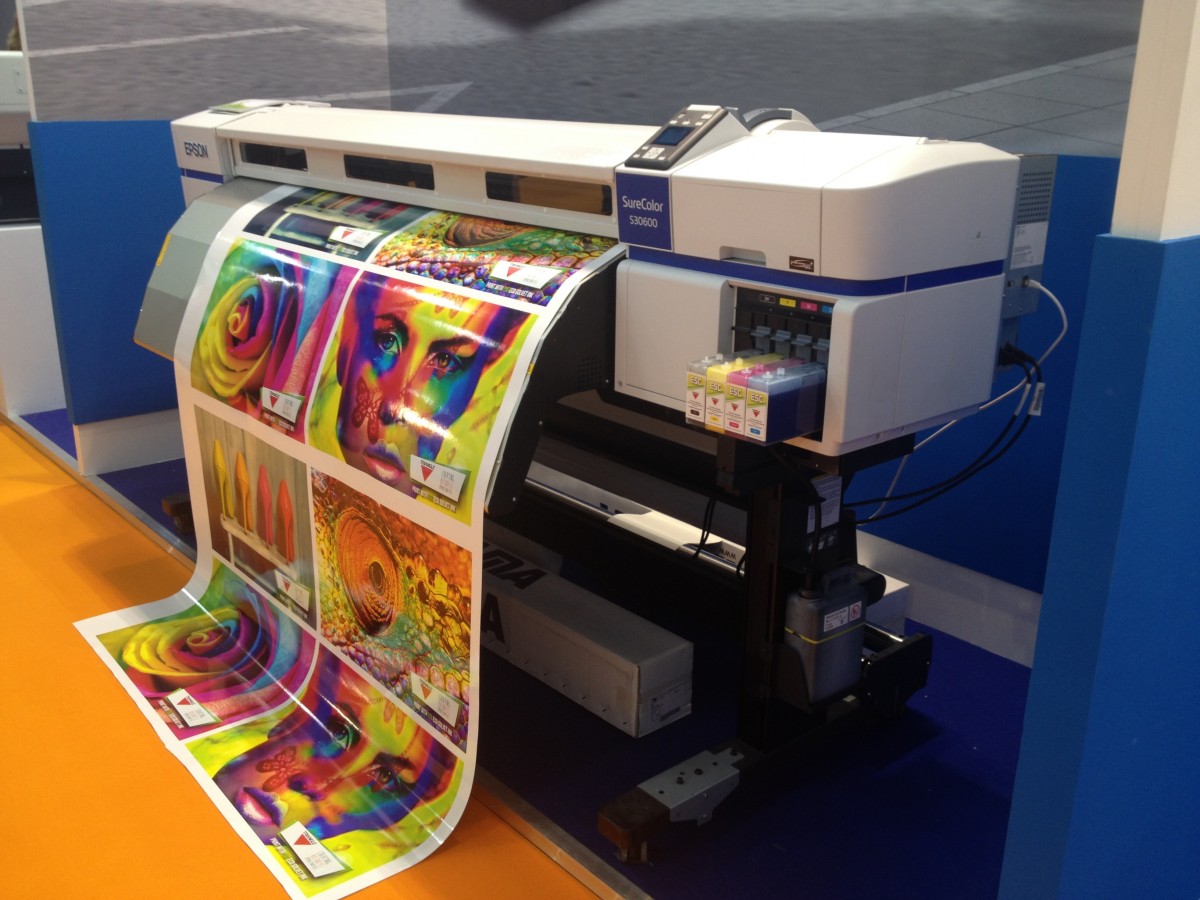
El plotter (in Spanish tracer or framer) It is another of those equipment used at a professional level to print all kinds of impressions and cuts, used by architects for large plans, by artists and designers, etc. Some confuse them with large printers, such as A3 formats, etc. But the truth is that they have differences with respect to these, although they share some similarities with CNC machines / 3D printers and conventional printers.
In this guide you will know everything you need to know about these machines, its types, characteristics, and if you really need one for your business or if it is preferable to opt for a conventional printer for DIN A3 formats, etc.
What is a plotter?
Un plotter is a special output device which is used to produce printed copies of large designs on paper, although there are also cut ones (and mixed ones, which do both functions, to perform the printing and then the necessary cutting, such as for vinyl or stickers). They were first used to produce construction maps, engineering drawings, architectural plans, and large business graphics.
All the parts of a plotter most notable are:
- Inbox: It is the rear place where the rolls of paper, vinyl, canvas, or the bond sheets used are placed. They can be found in various sizes, some of the most popular are (from smallest to largest):
- A4
- A3
- A3 +
- A2
- A2 +
- A1
- A0
- B0
- 44 ″ (111,8 cm)
- 64 ″ (162,6 cm)
- Main panel: This is where you have the buttons for controls, the touch screen, or the status indicators.
- Lid: Some usually have a cover that protects the cartridges and other internal parts from dust. It also acts as a safety element while performing the process, avoiding accidents with moving parts.
- Outbox: This is the opposite of the input tray, where jobs are already printed/cut.
- Mobile support: Some plotters sit on tables, but others have their own wheeled stands so they can be moved from one place to another.
- Cables: plotters usually have two cables:
- Food: the cable that connects to the electrical network to supply electricity.
- Data: the cable connected to the computer to send the design/cutting data. These can in turn be of various types, depending on the connector:
- USB
- FireWire
- RJ-45 / Ethernet (network)
- Wi-Fi (network)
- Parallel (used in the past)
Differences between a plotter and a printer
A normal printer and a plotter are similar in many ways, but it is also important to know the differences, since these will be key to opting for one or the other equipment for your home or business. Some keys are:
- Most plotters can work with larger formats that printers can't. There are printers larger than the classic A4, such as A3, but plotters go further.
- The plotter can also use rolls or coils instead of leaves in some cases.
- All the printers are cheaper than plotters.
- While the printer can work with data in bitmap or pixel format, the plotter does so with graphics or vector images with lines.
- A plotter is usually slowest taveller compared to a printer.
- Printer can only print one line at a time, while plotters can print multiple lines continuous from one point to another simultaneously.
- Printers are typically used for graphics and text printing. plotters for special drawings, plans, etc.
- plotters are resolution independent usually so the image produced can be enlarged without losing too much quality as would be the case with a printer.
- A plotter is usually not good for drawing large areas of a solid color, but yes for strokes.
- All the printers can't cut, the plotters yes (in some models).
- El plotter not only accepts paper, also other materials such as vinyl, synthetic canvas, films, etc.
How does a plotter work?
The first thing is to create the cut or graphic design in software, with files formatted as the DWG, CDR, AI, JPG, PDF, BMP, TIFF, Vector graphics, etc. These formats are usually passed to a PostScript format understandable by the plotter so that it can make the necessary movements to make the required design.
Of course, they will also need a driver or controller, such as a conventional printer and other peripherals. In this way, the operating system can interact with the plotter. Once the plotter has received the design data, it will be stored in the plotter's internal memory, and an internal processor will convert said data into control signals for the electromechanical system, causing it to carry out the necessary movements to capture the design.
In short, it works in a similar way to how a conventional printerOr a printer 3DOr a CNC machine.
What is a plotter for (applications)
The plotter is usually dedicated to large jobs for plotting and cutting. Some plotter applications are:
- Architecture or engineering projects.
- Labels
- Adhesives, both on paper and thermal film.
- Logos
- Billboards and advertisements.
- Topographic maps.
- Presentations for companies.
- Vinyl designs.
- Etc
That is, a plotter can be a tool whose functional characteristics could be used in:
- Design offices.
- Engineering companies.
- Architecture studies.
- mapping centers.
- Advertising companies.
- Or the companies dedicated to printing services, which print in large format on request.
Unlike printing machines, plotters are more versatile when changing jobs. Some offset or rotary presses need screen printing plates with a set design and, to change jobs, they need to create new plates and replace the ones already on the machine rollers. Something that takes time, so they do not support changes dynamically. A plotter can print a specific design and right after a different one without the need for changes, just by changing the print file.
Types of plotters
Several types of plotters which is important to differentiate, and can be classified according to various criteria. Some of the most important variants are:
Plotter printing
As I mentioned before, a plotter can print and/or cut. In this section we refer specifically to those who can print:
- Depending on the impact:
- Of impact: they owe their name to the way they work, by means of a printing head that contains metal pins that will hit an inked ribbon to capture the design on the paper. That is, they are similar to the way a typewriter works. Increasingly in disuse, although with the advantage that they are usually cheap in terms of maintenance.
- No impact: They do not impact the paper and are faster and quieter. The technologies encompassed within this type can be ink jet, laser, etc.
- according to technology:
- pen: they are vector-type electromechanical equipment. It is applied with a writing element such as a pen attached to the print head, hence its name. There are models that can work with liquid inks, with special pencils, etc. The most notable disadvantages are that they make noise during printing and are quite slow. Instead, they have very good print quality, high color rendering, smooth curves, etc. For this reason they have been traditionally used in branches such as topography, architecture, etc.
- inkjet or inkjet: It is an inkjet technology like conventional printers. They achieve the drawings by applying a large number of ink dots per inch (raster format) thanks to a piezoelectric injector. In addition, they can print in black and white or in color (black, magenta, cyan and yellow, from which they can obtain other colors and shades by mixing these primary colors). This technology was developed by Canon, and is currently very popular with all manufacturers. The advantages that drove this technology are its good printing speed, high resolution, reliability, and reasonable cost.
- electrostatic: an invisible image is applied to a special paper, then a liquid ink adheres to the electrically charged areas drawn in the initial phase. The advantages are its precision, quality, and speed, although it also has disadvantages such as its price, and the need to maintain the temperature and humidity in the room.
- Thermal or thermoplotters (direct plotters or PPVI): it is similar to the previous ones, and they work by passing the thermal paper through a “comb” that will give off a color only in the places that have been exposed to heaters (the ink does not adhere to the unexposed areas). However, to print an image in multiple colors, you will have to pass the canvas as many times as there are colors. Its advantage is that it is resistant to humidity and UV radiation, but it is slow and tedious.
- Optical (laser or LED): They also have similarities with the two previous types, but in this case laser or LED technology is used for the exposures, thus marking where the ink should adhere. In this case, the electromagnetic beam will make an invisible image on the paper and the toner dust particles adhere to the charged areas of the paper, and not to others. This technology provides high speed, high resolution and quality, as well as long-lasting consumables, longer than inkjet ink cartridges. However, against it has its higher cost.
- According to your design:
- Table or tablet plan: they are flat, they rest on a table and work horizontally, like pen ones. They are widely used for CAD designs such as those of architects and engineers.
- drum or roller: In this type of plotter, the paper is wound around a spindle that rotates, allowing the image to be drawn as it goes.
Cutting plotter
Up to now the types of printing plotter have been specified, but there are also cutting plotters and even models that can print and cut. The operation can be similar to those of a pen, but instead of a pencil it has a blade to make the cuts on the canvas that can be made of different materials:
- Cardboard
- Paper
- Cardboard
- thermal film
- Vinyl
- Photographic paper
- Sticker or adhesive paper
- Mylar (also called BoPET, is a stretched polyethylene terephthalate-type polyester film of high strength and chemical stability. It is transparent and has reflectivity.)
Plotter according to your ink
Plotters can also be cataloged depending on the ink they use:
- Plotters with water-based inks: inks use water as a solvent to transport the pigment.
- Plotters with eco-solvent inks: in this other type, the solvent is volatile in the solution.
- Plotters with inks for sublimation- Inks are designed to penetrate polyester fabrics or other types of polyester coatings.
Types of consumables for plotters
It is important know the materials with which a plotter can work, as well as the characteristics of the types of inks employees that I mentioned earlier.
types of inks
As for the inks or pigments that plotters can use are:
- Water based (DYE): It is a type of ink with water as a solvent for the pigment, which makes it non-toxic. It can be interesting for paper or cardboard intended for food packaging. However, it is not resistant if exposed to inclement weather, as it dissolves with water.
- Eco-solvent based: in this case a chemical solvent is used, which makes it more resistant and durable. The problem is that they are toxic, although they resist inclement weather and can last up to 3 years. They are the most popular because of their low cost.
- UV ink: they are resistant to prolonged exposure to sunlight. Their production process requires drying by UV (ultraviolet) rays. They are not cheap, but they are used exclusively for prints that will be exposed to the elements due to their resistance.
- Powder: it is a toner powder that is manufactured from a chemical process. It is a powder similar to the residue that a candle leaves when it is burned, that is, somewhat oily. In addition, it undergoes a process so that the particles have the same size and color.
Types of printable materials
If we refer to the materials on which a plotter can print, so, we have:
- According to your destination:
- For interior: They are more focused on print quality, but they are not weather resistant. Therefore, they can only be used indoors and must be properly stored. For example, paper, cardboard, cardboard, etc.
- For exterior: they are characterized by their resistance to environmental and meteorological conditions, so they are suitable for advertising signs, information signs for shop fronts, etc. For example, vinyl, polypropylene, canvas, etc.
- According to the material:
- paper and cardboard: Both are made from cellulose (extracted from wood or recycled paper), although cardstock is created to be thicker and stronger. In addition, they usually have standardized weights and sizes. For example, 80 or 90 grams of paper, or between 180 and 280 grams of cardboard, with sizes such as A4, A3, etc. On the other hand, they can have pigments of different colors, patterns, etc.
- Cardboard: it is a material that is obtained from the superposition of paper made of cellulose fibers. Of course, the cardboard is superior in thickness and grammage, and has a more resistant structure, in the form of a sandwich and with a honeycomb structure inside. Generally, it is not subjected to chemical chlorination processes, but is left in its natural tone.
- Vinyl: produced from vinyl chloride or chloroethylene (H2C=CHCl). The result is a plastic polymer alloy made from polyvinyl chloride (PVC). It is resistant, waterproof, has a certain gloss, and can be used for logos, decoration, outdoor stickers, etc.
- Vegetal paper: it is a sulfurized paper that is manufactured by treating sheets of paper with sulfuric acid and washing it afterwards. In this way, the pores are obstructed and it becomes waterproof. This treatment gives it a satin touch and slight transparency.
- Polypropylene: It is a type of paper that is very soft, flexible, and resistant to scratches and tears. An alternative to durable printing, for use on billboards, light boxes, road signs, signs, shop signs, etc.
- Canvas: It is usually made of cotton, although historically it was made of hemp. It is a very heavy and very robust fabric, which is why it is often used for shoes, bags, covers, awnings, advertising signs, boat sails, canopies, etc. There are special ones for printing, dyed, waterproof, and even fire retardant. The plotters can support banners with a grammage of up to 400 grams.
- Coated paper: a type of coated or coated paper prepared for outdoors, with a high grammage of between 100 and 180 grams. It is called that because it has a stuccoed finish, with a certain shine. It can be ideal for advertising, photographic paper, etc. This type of paper has a higher grammage, between 100-180g and has a coated finish, with a certain gloss, although the gloss reduces the absorption of the ink.
- Bond paper: it is made with cellulose fibers (for example eucalyptus) or cotton and chemical substances. It has a very smooth, white and uniform surface, allowing good adhesion for the ink. It has a grammage greater than 50 grams,
- Canvas: it is a fabric of natural fibers of linen, cotton, or hemp in general. It is generally used for artistic works.
- polyester fabric: one of the most used synthetic fibers to make fabrics and fabrics, especially for clothing. This fabric is very robust and wrinkle resistant, as well as having other interesting properties.
- According to grammage (g/m2):
- 80 gr: It is a very popular weight, many of the conventional printing papers are of this weight. It could be useful for printing sketches, designs, etc.
- 90 gr: it is a somewhat thicker and heavier paper, but it is not as common as the previous one. It can generally be used for somewhat more special jobs.
- Others: there are other types of weights, although these two are the most common on the market.
- Depending on the finish:
- Brightness: It is any type of surface with a gloss treatment.
- Matte: it is a non-shiny surface.
- I brushed: it is something intermediate between the shine and the satin. It has a slight touch of shine, but quite dull.
- Adhesive paper/vinyl: they are paper, vinyl, etc., with adhesive to be able to stick it to walls as decoration, on objects such as a sticker, on cars as advertising, etc.
- Photographic paper: a paper with a surface treatment in the form of a light-sensitive emulsion, making it bright and suitable for printing photographs.
- backlit paper: used in shops and exhibitors, using a light projector in its rear area so that the image is visible from the front, attracting more attention or in the dark.
- According to the size:
- DIN A4: 210 × 297 mm
- DIN A3 and A3+: 420 × 297 mm y 320 × 440 mm
- DIN A2 and A2+: 420×594mm and 450 × 640 mm
- DIN A1: 594 × 841 mm
- DIN A0: 841 × 1189 mm
- B2: 500 × 707 mm
- B1: 707 × 1000 mm
- B0: 1000 × 1414 mm
- Others: there are other non-standardized formats, and also continuous paper, that is, it comes with a certain width but in a long roll to cut the necessary dimensions.
plotter software
As with 3D printers and CNC machines, plotters also require software to design what you want to print/cut and pass it into a suitable format. Although some of the computer programs we have already seen in the areas of machining and additive manufacturing.
The best programs for printing plotter
*Programs for conventional printing can also be used for plotters, such as Adobe Photoshop, Autodesk AutoCAD, GIMP, FreeCAD, CorelDraw, Inkscape, etc.
The best programs for cutting plotter
*Regarding cutting with a plotter, some of those seen in topics of CNC cutting machines are also valid for plotters. However, there are also other interesting ones such as:
- EasyCutStudio: For Windows and macOS.
- Sure Cuts A Lot: For Windows and macOS.
- Vinyl Mastercut: for Windows.
- Inkscape+visicut: cross-platform, for Windows, macOS and Linux.
- etc.
More information
- CNC machines: guide to numerical control
- How a CNC machine works and applications
- Prototyping and CNC design
- All types of CNC machines according to use and characteristics
- CNC lathe types and characteristics
- Types of CNC milling machines
- Types of CNC router and CNC cutting
- Types of laser engraving
- Other CNC machines: drilling, Pick & Place, welding and more
- How can a CNC machine help in the company
- Buying Guide: How To Choose The Best CNC Machine
- Maintenance of CNC machines
- The best CNC machines for leisure and professional use
- The best printing plotters
- The best cutting plotters
- The best consumables for potters: cartridges, paper, vinyl, and spare parts
